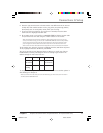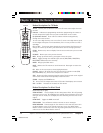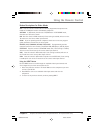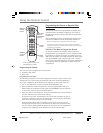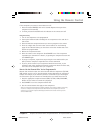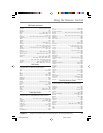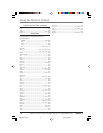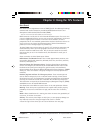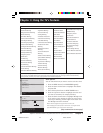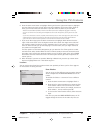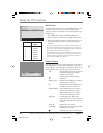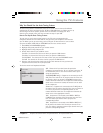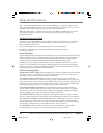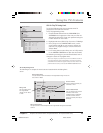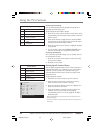
Chapter 3 19
Graphics contained within this publication are for representation only.
Chapter 3: Using the TV’s Features
Alert Guard
Alert Guard receives digital data known as SAME (Specific Area Message Encoding)
combined with audio information provided by NOAA (National Oceanic and
Atmospheric Administration) Weather Radio (NWR).
Note: For more information about NOAA, visit www.noaa.gov.
NOAA conducts a weekly test for the all hazards broadcast system. The test is once
a week on Wednesday between 10 a.m. and 12 noon for approximately 15 minutes.
If there is ongoing severe weather or a threat of severe weather, the test is
postponed until the next available good-weather day. Alert Guard uses this test to
ensure you’ve set the channel and locations properly. If Alert Guard detects a
problem, on-screen messages appear to provide help.
The Alert Guard system receives alerts for the U.S., U.S. territories, possessions and
associated states, within your local geographic area. Your TV can’t receive any
alerts for locations outside these areas. Also, if alerts are issued for areas other
than those that you set in the Location menu, Alert Guard won’t notify you of
those alerts.
Alerts received by the Alert Guard system follow:
NOAA Natural and Weather Events- These include approximately 30 alerts, such
as tornadoes, flash floods, avalanches, blizzards, forest fires, hurricanes, tsunamis,
volcanoes, earthquakes, etc.
State and County Civil Emergency Alerts- The Alert Guard feature responds to
current civil emergency alerts issued by all hazards NWR network. These include
localized nuclear power plant emergencies, gas line breaks, train derailments,
missing children alerts (America’s Missing: Broadcast Emergency Response- AMBER
Alerts), etc. These non-weather emergency messages are not fully implemented
nationally.
National, Regional and State Civil Emergency Alerts- These include high level
state or federal emergencies, such as national attack warnings, terrorist attack
alerts (these aren’t the “Threat Advisories” issued by the Department of Homeland
Security), bio-warfare alerts and other immediate life-threatening emergencies.
This information is relayed by the Federal Emergency Management Agency (FEMA)
and NOAA over the all hazards NWR network.
Alert Guard has several different levels of alerts. A list and explanation follows:
Warning- These alone pose a significant threat to public safety and/or property,
probability of occurrence and location is high, and the onset time is relatively
short.
Watch- Meets classification of a warning, but either the onset time, probability of
occurrence, or location is uncertain.
Advisory- This event by itself might not kill, injure, or cause property damage but
may indirectly cause other things to happen that result in a hazard.
A list of the type of alert levels you can receive follows on the next page.
16356860.03-Features 4/28/04, 9:53 AM19



